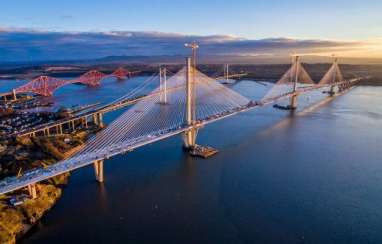- retro 11 jordans authentic - Mindarie-waShops - The Nike gray Air Max Dn is Dropping For Air Max Day 2024
- nike flyknit roshe electric green black Paris 308270 - SBD - nike boot with side zipper jeans black pants size , 111 Release Date
- SBD - 600 Mid GS Medium Soft Pink FD8780 , NIKE◆AIR JORDAN 5 RETRO TORO BRAVO 27.5cm RED DD0587 - 116 - NIKE◆AIR JORDAN 5 RETRO TORO BRAVO 27.5cm RED DD0587-600
- Jordan Trunner Q4 343408-171 - Air LOW Jordan 1 Art Basel Igloo Rust Pink - LOW Jordan LOW Jordan ADG 3 sneakers Schwarz
- Air MUS12 Jordan 3LAB5 Gamma Blue Metallic Silver - MUS12 Jordan Air 200e Men Dc9836-200 - 200 - MUS12 Jordan Air 200e Men Dc9836
- kids air jordan
- Nike Blazer Mid 77 Catechu DC9265 101 Release Date
- Miles Morales Shameik Moore Air Jordan 1 Spider Verse
- Air Jordan 1 Mid Bred 554724 074 2020 Release Date 4
- Air Jordan 1 Blue Chill Womens CD0461 401 Release Date 4
- Home
- News and analysis
- Info hubs
- Events
- Video
- Case Studies
- About us
- Magazine
- Advertising
Produced for the industry by the Association for Consultancy and Engineering
Opinion
If you build it, they may not come
Major infrastructure projects such as the recently opened Queensferry Crossing can have a wider significance as a catalyst for economic growth, says Alan Shanks.

Last month’s grand opening of the Queensferry Crossing represents a feat of modern engineering - the longest three-span cable-stayed bridge; delivered on time and under budget. It was a significant moment for Scotland with the international media spotlight shining down on the east coast as the Queen opened the bridge, providing a vital new artery between Fife and the Lothians.
However, we cannot let the spectacle of the Queensferry Crossing distract from the role such a bridge plays in the wider economy and in enabling long-term economic growth for Scotland. Certainly, in the short-term, the build project has had a significant and immediate impact on the local economy. Since work began, more than 15,000 people have been involved in the construction, with sub-contracts and supply-chain contracts valued at more than £350m.
However, as part of the bigger picture and away from the immediate build benefits, the bridge only enables economic growth, it does not create it. As with any major infrastructure project, it mustn’t be seen as a silver bullet to all of our challenges.
It will be the businesses and organisations around which infrastructure is built, which creates the long-term economic prosperity for the region and the country. Thus, the government, in collaboration with local and national organisations, should be working together to promote the region, using the bridge as one important selling point among many.
The strategy has to take into account many elements; investment in education - ensuring we have the right skills to attract businesses, strong support networks which are crucial to advise businesses from seedling to FTSE level. Strong supply-chain networks with which to take advantage of modern infrastructure are essential. These are only some of the considerations which must be considered when investing in any infrastructure project. Without a strong generational economic plan wrapped around it to attract local, national and international business activity, modern infrastructure is merely an empty vessel.
Spain provides a stark reminder of this. As one of the largest nations within the EU, the country continues to face economic challenges, even before you consider the impact of the current constitutional upheaval. It has only recently begun to see the shoots of recovery appear within an economy that was hit hard by the global financial crisis. Even today, unemployment rates continue to hover at around one in five - nearly double the current Eurozone average.
This is despite, pre-2010, ploughing investment into its infrastructure across the country. With the third largest rail network in the world, airports sprawled across the country and modern highways linking major cities and towns, Spain consistently ranks higher than its EU neighbours in the European Commission’s mobility and transport scoreboard.
However, poor long-term planning and a lack of a connected strategy to complement economic growth plans, means that projects such as the infamous Ciudad Real Central Airport, a symbol of Spain’s infrastructure boom years and costing €1bn to build, lies empty, having filed for bankruptcy in 2012. A similar fate has befallen some of the country’s high-speed rail lines. Over-supply and inadequate demand has resulted in the high-speed line through the Pyrenees, from Perpignan in the south of France to Figueras in northeast Spain, filing for bankruptcy proceedings in July 2015.
Thus, even a sophisticated, dense infrastructure - created as a result of huge investment from government and business - failed to help mitigate the impact of the crash, with Spain languishing in the recession doldrums for longer than its EU equivalents.
The Queensferry Crossing is a robust string for Scotland to add to its bow. However, on its own, it’s benefits are limited. Only wrapped up into something much bigger can the communities in the Lothians and Fife truly unlock the potential of the new bridge. Therefore, we should be looking at the future - how can we reap the rewards modern infrastructure will bring to the region, not just today, but in 50 and 100 years’ time.
Alan Shanks is head of finance and projects at Addleshaw Goddard in Scotland.






